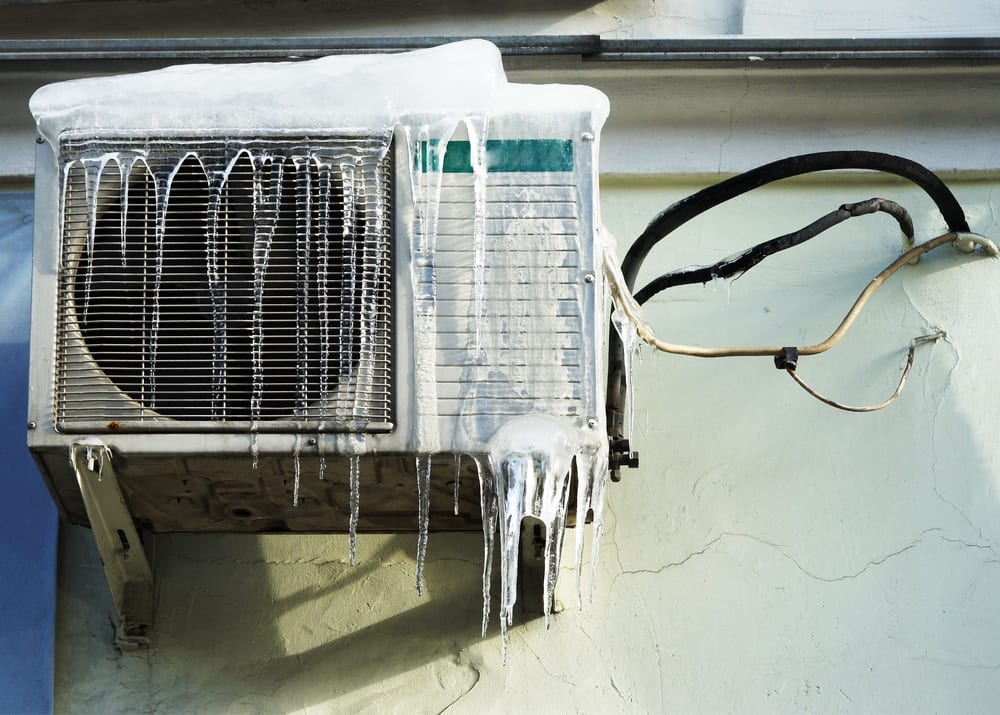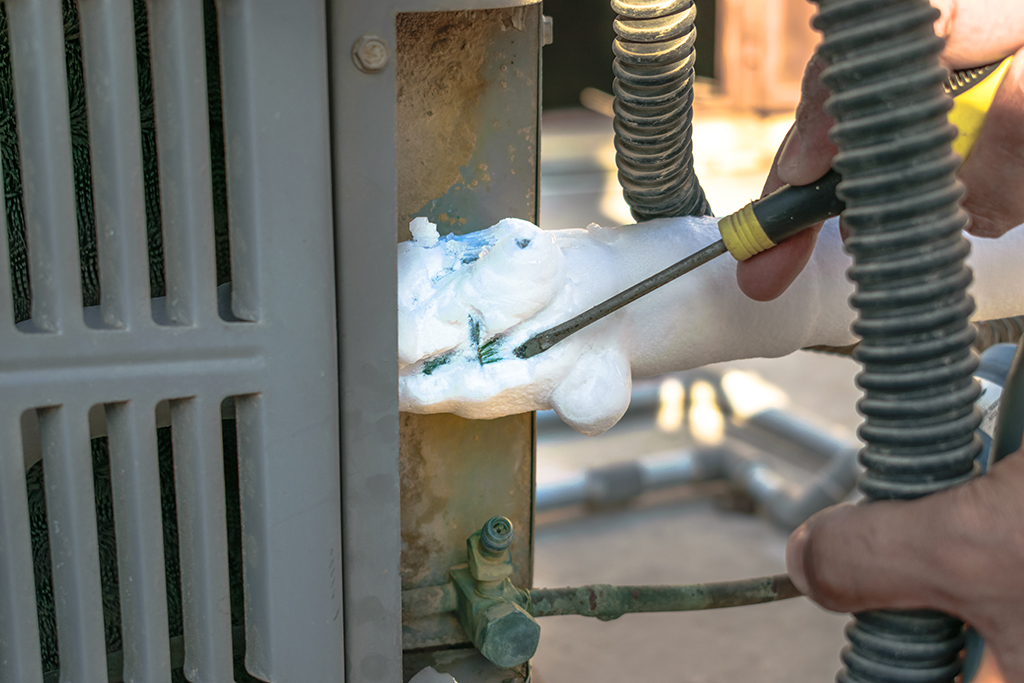What to I Do If My AC Pipe Is Frozen? - Key Tips for Fixing Functionality
What to I Do If My AC Pipe Is Frozen? - Key Tips for Fixing Functionality
Blog Article
Just how do you actually feel on the subject of Have a Frozen AC Line? Here’s How to Fix It?

Intro
Finding that your AC pipeline is frozen can be worrying, particularly during warm summer months when you depend on your air conditioning unit one of the most. Understanding what to do in such a scenario is essential to stop further damage to your air conditioning system and ensure your comfort inside.
Understanding the Causes
A number of aspects can add to the cold of an AC pipe. Comprehending these reasons can help you deal with the concern properly.
Lack of Airflow
One typical root cause of an icy air conditioner pipeline is inadequate airflow. When the airflow over the evaporator coil is limited, it can create the coil to go down below freezing temperature level, causing ice development on the pipe.
Low Refrigerant Levels
Insufficient refrigerant degrees in your a/c system can likewise result in an icy pipeline. Low cooling agent degrees can create the pressure in the system to go down, bring about the cold of wetness on the evaporator coil.
Cold Weather Conditions
In cooler climates, freezing temperatures outside can add to the freezing of air conditioning pipelines. If your air conditioner device is not correctly protected or if there are leaks in the ductwork, chilly air can infiltrate the system, creating the pipe to freeze.
Dirty Air Filters
Filthy or stopped up air filters can restrict airflow in your a/c system, leading to different issues, including an icy pipeline. It's necessary to replace or cleanse your air filterings system routinely to make sure correct air flow and stop ice build-up.
Indicators of a Frozen Air Conditioner Pipe
Identifying the indicators of an icy air conditioning pipe is critical for punctual activity.
Reduced Airflow
If you see a substantial reduction in airflow from your vents, it could show an icy pipe.
Ice Buildup on the Pipe
Noticeable ice accumulation on the refrigerant line or the evaporator coil is a clear sign of an icy air conditioner pipeline.
Unusual Sounds from the Unit
Uncommon noises, such as hissing or bubbling, originating from your air conditioning device can signify that there's ice existing on the pipe.
Immediate Actions to Take
When faced with an icy a/c pipe, it's necessary to act quickly to stop additional damages to your cooling system.
Switching off the a/c
The initial step is to turn off your air conditioning system to stop the system from running and exacerbating the issue.
Looking for Blockages
Inspect the location around the indoor system for any type of blockages that might be blocking airflow, such as furniture or drapes.
Thawing the Pipe
You can use gentle methods like placing towels taken in cozy water around the frozen pipe to aid thaw it gradually.
Preventive Measures
Taking preventive measures can aid stay clear of future events of an icy a/c pipe.
Regular Maintenance Checks
Set up routine upkeep contact an expert HVAC technician to make certain that your a/c system is running efficiently.
Transforming Air Filters
Frequently change or clean your air filters to prevent air movement restrictions and preserve optimum efficiency.
Insulating Exposed Pipes
If your air conditioning pipes are subjected to chilly temperature levels, take into consideration shielding them to stop freezing during cold weather.
Looking For Professional Help
If DIY approaches fail to fix the problem or if you're not sure regarding just how to continue, it's ideal to look for aid from a certified HVAC professional.
When DIY Methods Fail
If your efforts to thaw the pipe or address other concerns are not successful, it's time to contact an expert.
Significance of Hiring a Professional HVAC Technician
A certified HVAC specialist has the know-how and devices required to detect and repair issues with your a/c system safely and properly.
Final thought
Handling an icy air conditioning pipeline can be a discouraging experience, but recognizing how to react can help lessen damages and restore comfort to your home. By comprehending the reasons, recognizing the indicators, and taking punctual action, you can successfully resolve the issue and avoid future occurrences.
Frozen AC Line: Why It Happens & What To Do About It
A frozen AC line can be a rather peculiar sight in a place like Phoenix, Arizona where nothing ever freezes. In this post, we’ll discuss what makes an air conditioner line frozen – and what you can do about it.
Dirty Air Filters
Did you know that you should be cleaning or replacing your air filters on a monthly basis? Failing to do this can result in airflow issues that, in turn, cause your evaporator coils and lines to freeze over. You’ll notice a buildup of ice on both components, although the buildup on your pipes will, of course, be more evident unless you open your air condition up to reveal the coils.
What To Do About It
Give your air filter a good cleaning if it’s reusable. If not, replace the filter outright. Next, switch your air conditioner’s fan setting on and leave it there for 2-3 hours. This will draw warm air in, helping to thaw your evaporator coil. You can also check out this article for some tips on cleaning the coils themselves if you’d like to speed the process up. Before you switch the unit back to its normal state, make sure the supply vents are completely unobstructed and free of dust or other debris.
If you keep having this issue even after replacing your filters regularly, contact a local HVAC repair company and have them inspect your evaporator coil, ductwork, and any other components that may be at fault. If you live in the Phoenix, Arizona area, give American Home Water and Air a call.
Low Refrigerant Levels/Leakage
What To Do About It
Contrary to what air conditioner “recharge” companies often tell their clients about refrigerant, it should never need to be simply refilled. You see, refrigerant runs in what experts refer to as a “closed loop.” Refrigerant really shouldn’t be leaving that loop. If it is, you’ve got a leak.
Paying someone to come and pump more refrigerant into your system (aka “recharge” it) isn’t the solution. Doing that will simply kick the can down the road. Besides, refrigerant leaks can be harmful to the environment and people in your home.
Rather, you need to take care of the leak with the help of a technician. Check out this article for some more information about dealing with air conditioners that are leaking refrigerant. Before you contact a technician, switch your thermostat to the off position. Then, switch the fan setting on and let it run for 2-3 hours so the unit can thaw.
Improper Temperature Setting
Improper temperature settings can also cause a drop in your air conditioner’s pressure. What many people don’t realize is that air conditioners are actually designed to run when temperatures have fallen above roughly 60 degrees Fahrenheit. If you run the unit when it’s cold outside, you’ll run into many issues, including frozen components.

I am very excited about Air Conditioner Frozen? How To Fix your Frozen AC Line and I really hope you liked the new blog posting. Are you aware of someone else who is intrigued by the topic? Why not share it. I treasure reading our article about Why Is Ice On My Outside Air Conditione.
Call Today Report this page